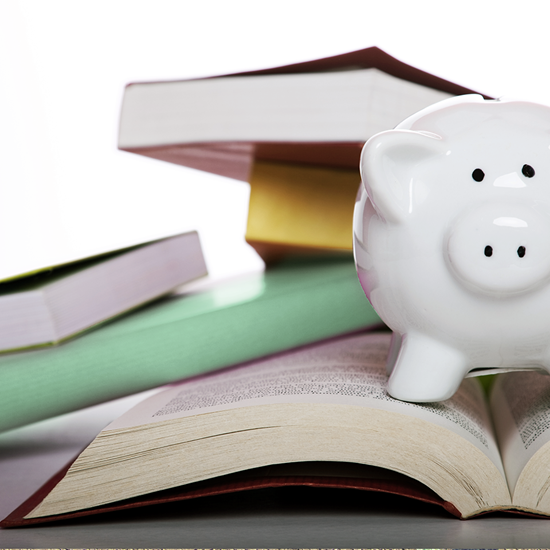
How can I get a better return on my RESP investment?
When you open a Registered Education Savings Plan (RESP), you benefit from a highly advantageous investment that allows you to save for a child’s post-secondary education. But did you know that there are strategies for implementing sound financial planning to help you achieve your financial goals? Here are our savings tips to help you make the most of your RESP.
I want to become a customer
I’m already a customer
Do you have more than one child? Double your government grants!
This little-known RESP trick can pay off handsomely. All you have to do is withdraw an amount from the RESP of your older child enrolled in post-secondary studies – and therefore eligible for withdrawal – and then transfer this amount to your younger child’s RESP.
For example, by withdrawing $2,500 from your older child’s RESP and then immediately depositing it into your younger child’s RESP, your younger child can benefit from $750 in government grants1 – and with absolutely no additional investment on your part!
How can I recover unused contribution room from previous years?
If you haven’t contributed in certain years, or if you haven’t yet reached the authorized maximum, it’s not too late! You can make additional contributions to your RESP and use unused grant room from previous years, up to a maximum of $5,0002.
Would you like to find out whether you have any unused contribution room? Make an appointment with your sales representative today!
Automating your payments
Making automatic payments into your RESP is a savings discipline that offers a number of advantages. In particular, such payments enable you to better plan your finances and save money “the easy way.” By scheduling automatic payments into your RESP, you maintain your savings pace and increase your chances of reaching the maximum annual contribution of $2,500 to qualify for the government grants to which you’re entitled.
Another major advantage is that, by opting for the consistency of automatic payments, you are investing for the long term, allowing your savings to weather the cycles and movements of the financial markets without compromising the anticipated returns.
Maximizing your government grants
If you can afford it, make sure you contribute $2,500 a year to your RESP, or $209 a month, to get the maximum government grants possible.
Here are the government grants associated with RESPs1:
- The Canada Education Savings Grant (CESG) is financial assistance that increases the first $2,500 contributed per year by 20% to 40%, up to a maximum of $600 per eligible year per child and a lifetime maximum of $7,200 per beneficiary.
- The Quebec Education Savings Incentive (QESI) boosts your RESP contributions by 10% to 20%, up to a maximum of $300 per year and a lifetime maximum of $3,600 per child.
- The Canada Learning Bond (CLB) is financial assistance for children from low-income families born after December 31, 2003. An amount of $500 is paid from the first year in which the beneficiary is eligible; then $100 is paid for each year of eligibility, until the child reaches the age of 15. In total, your child could receive $2,000 thanks to the CLB.
Perhaps friends or family would like to give your child a gift? Ask them to contribute to your child’s RESP!
Christmas, birthdays, school achievements, graduations... Godparents, uncles and aunts often run out of ideas when it comes to giving a gift to a child. Investing in an RESP is an original, useful, sustainable and environmentally responsible idea that will encourage and motivate your young people to pursue post-secondary education. It’s also a great opportunity to teach children about saving.
Grandparents can, of course, contribute to their grandchildren’s RESPs and even open an RESP for them! It’s a good way for them to save tax-free, with tax-free earnings, and to give their grandchildren a share of their inheritance now. In this way, grandparents contribute to a bright future for their grandchildren, enabling them to choose the education and career of their dreams.
Adapting your savings strategy to your children’s ages
If you plan to withdraw funds from your RESP in the near future, it makes more sense to make investments that will preserve your invested capital.
On the contrary, if you have a lot of time on your hands, especially if your child is young, you may prefer riskier investments with greater long-term growth potential.
By investing in an RESP with Kaleido, you benefit from an evolving investment strategy that adapts to your child’s age for all plans in the IDEO+ line.
Your Kaleido scholarship plan representative is always available to help you with your savings project and advise you on the best strategies for RESPs and government grants.

This simple tool will help you calculate how much your child’s postsecondary education could cost.
few secondes!
1. Basic Canada Education Savings Grant (CESG) from 20% to 40% and basic Quebec Education Savings Incentive (QESI) from 10% to 20%. Based on adjusted family net income. The maximum annual CESG payment is $600 and the maximum annual QESI payment is $300. The cumulative lifetime maximum per beneficiary is $7,200 under the CESG and $3,600 under the QESI. Canada Learning Bond (CLB) of up to $2,000 per beneficiary, for a financially eligible child born after December 31, 2003. Certain conditions apply. See our brochure at kaleido.ca.
2. Certain conditions apply. See our brochure at kaleido.ca.



